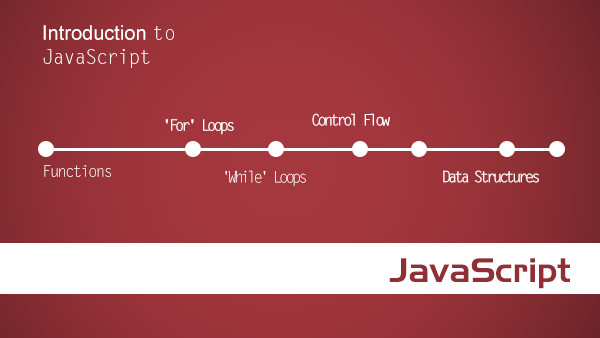本文详细介绍了Fetch和Axios两个库的使用方法,并通过实战项目演示了如何使用它们进行网络请求。文章涵盖了Fetch与Axios的基础使用、GET和POST请求的发送,以及如何处理响应数据。通过实际操作,读者可以深入了解Fetch / Axios项目实战的全过程。
Fetch与Axios简介 Fetch API简介Fetch API 是浏览器内置的标准接口,用于发起网络请求。它返回一个 Promise 对象,可以处理异步请求的结果。Fetch API 提供了更强大的功能,如请求和响应的流式处理。Fetch API 支持 HTTP 协议,可以与服务端进行数据交换。
fetch('https://api.example.com/data')
.then(response => response.json())
.then(data => console.log(data))
.catch(error => console.error('Error:', error));Axios 是一个基于 Promise 的 HTTP 客户端,用于浏览器和 Node.js。它支持拦截请求和响应、转换请求和响应数据、自动转换 JSON 数据、处理浏览器和 Node.js 的 CORS 问题。Axios 是一个广泛使用的库,因为它具有良好的跨平台支持和易于使用的 API。
axios.get('https://api.example.com/data')
.then(response => {
console.log(response.data);
})
.catch(error => {
console.error('Error:', error);
});-
区别:
- Fetch API 是浏览器内置,而 Axios 是第三方库。
- Fetch API 使用 Promise,Axios 也使用 Promise,但 Axios 的 API 设计更直观。
- Fetch API 不支持浏览器的自动 JSON 转换,而 Axios 会自动解析 JSON 数据。
- Axios 提供了更丰富的功能,如请求和响应拦截、取消请求等。
- 联系:
- 两者都可以发起 GET 和 POST 请求。
- 都可以处理响应和错误。
创建一个新的项目目录,并初始化一个新的 Node.js 项目。
mkdir my-project
cd my-project
npm init -y初始化完成后,可以通过 cat package.json 查看生成的 package.json 文件内容。
cat package.json使用 npm 安装 Axios。
npm install axios安装完成后,可以通过以下代码验证 Axios 是否安装成功:
const axios = require('axios');
console.log('Axios is installed and working');Fetch API 可以通过 fetch 函数发起 GET 请求。fetch 函数返回一个 Promise,解析响应时可以调用 .then 方法。
fetch('https://api.example.com/data')
.then(response => {
if (response.ok) {
return response.json();
} else {
throw new Error('Network response was not ok');
}
})
.then(data => console.log(data))
.catch(error => console.error('Error:', error));Fetch API 发送 POST 请求需要设置请求体,可以通过设置 body 参数来实现。JSON.stringify 用于将 JavaScript 对象转换为 JSON 字符串。
const data = {
name: 'John Doe',
age: 30
};
fetch('https://api.example.com/data', {
method: 'POST',
headers: {
'Content-Type': 'application/json'
},
body: JSON.stringify(data)
})
.then(response => {
if (response.ok) {
return response.json();
} else {
throw new Error('Network response was not ok');
}
})
.then(data => console.log(data))
.catch(error => console.error('Error:', error));Fetch API 返回的响应对象 Response 可以通过 .json() 方法来解析 JSON 数据。.json() 返回一个 Promise,解析成功后可以获取到解析后的数据。
fetch('https://api.example.com/data')
.then(response => response.json())
.then(data => {
console.log(data);
// 处理数据
})
.catch(error => console.error('Error:', error));Axios 发送 GET 请求非常简单,使用 axios.get 方法即可。axios.get 返回一个 Promise,可以通过 .then 方法处理响应数据。
axios.get('https://api.example.com/data')
.then(response => {
console.log(response.data);
})
.catch(error => {
console.error('Error:', error);
});Axios 发送 POST 请求也需要设置请求体,可以通过 axios.post 方法来实现。Axios 自动解析 JSON 数据,无需手动转换。
const data = {
name: 'John Doe',
age: 30
};
axios.post('https://api.example.com/data', data)
.then(response => {
console.log(response.data);
})
.catch(error => {
console.error('Error:', error);
});Axios 发送的请求返回的数据可以通过 .then 方法处理,响应对象 response 包含 data、status、statusText、headers 和 config 等属性。
axios.post('https://api.example.com/data', data)
.then(response => {
console.log(response.data);
// 处理数据
})
.catch(error => {
console.error('Error:', error);
});为了演示数据交互,我们选择了一个公开的 API:JSONPlaceholder。它提供了一些示例的 REST API,可以用来测试各种 HTTP 请求。
https://jsonplaceholder.typicode.com使用Fetch
使用 Fetch API 发送 GET 请求来获取用户列表。
fetch('https://jsonplaceholder.typicode.com/users')
.then(response => response.json())
.then(users => {
console.log(users);
})
.catch(error => console.error('Error:', error));使用Axios
使用 Axios 发送 GET 请求来获取用户列表。
axios.get('https://jsonplaceholder.typicode.com/users')
.then(response => {
console.log(response.data);
})
.catch(error => {
console.error('Error:', error);
});使用Fetch
使用 Fetch API 发送 POST 请求来提交数据,这里我们提交一个用户。
const userData = {
name: 'Jane Doe',
username: 'johndoe',
email: 'jane.doe@example.com',
address: {
street: '123 Main St',
suite: 'Apt 12',
city: 'Anytown',
zipcode: '12345'
},
phone: '123-456-7890',
website: 'johndoe.com',
company: {
name: 'ACME Corp',
catchPhrase: 'Innovating since 1999',
bs: 'world-class solutions'
}
};
fetch('https://jsonplaceholder.typicode.com/users', {
method: 'POST',
headers: {
'Content-Type': 'application/json'
},
body: JSON.stringify(userData)
})
.then(response => response.json())
.then(data => {
console.log(data);
})
.catch(error => console.error('Error:', error));使用Axios
使用 Axios 发送 POST 请求来提交数据,这里我们提交一个用户。
const userData = {
name: 'Jane Doe',
username: 'johndoe',
email: 'jane.doe@example.com',
address: {
street: '123 Main St',
suite: 'Apt 12',
city: 'Anytown',
zipcode: '12345'
},
phone: '123-456-7890',
website: 'johndoe.com',
company: {
name: 'ACME Corp',
catchPhrase: 'Innovating since 1999',
bs: 'world-class solutions'
}
};
axios.post('https://jsonplaceholder.typicode.com/users', userData)
.then(response => {
console.log(response.data);
})
.catch(error => {
console.error('Error:', error);
});- 问题:请求网络失败,出现
Network Error。 - 解决方法:检查网络连接,确保目标 URL 是正确的。
- 示例代码:
axios.get('https://example.invalid')
.then(response => {
console.log(response.data);
})
.catch(error => {
console.error('Error:', error);
});- 问题:请求时出现
Access to XMLHttpRequest at '...' from origin '...' has been blocked by CORS policy。 - 解决方法:检查目标服务器是否允许跨域请求。如果服务器不支持 CORS,请使用代理服务器。
- 示例代码:
axios.get('https://api.example.com/data', {
headers: {
'Access-Control-Allow-Origin': '*'
}
})
.then(response => {
console.log(response.data);
})
.catch(error => {
console.error('Error:', error);
});- 问题:请求返回的数据不是 JSON 格式,解析时出现错误。
- 解决方法:检查返回的数据格式,确保服务器返回的是 JSON 格式的数据。
- 示例代码:
fetch('https://api.example.com/data')
.then(response => response.json())
.then(data => {
console.log(data);
})
.catch(error => console.error('Error:', error));抽取公共代码
将公共代码抽取到一个单独的函数中,避免重复代码。
const fetchJson = async (url) => {
const response = await fetch(url);
if (!response.ok) {
throw new Error('Network response was not ok');
}
return response.json();
};
fetchJson('https://api.example.com/data')
.then(data => {
console.log(data);
})
.catch(error => {
console.error('Error:', error);
});使用错误处理
在代码中添加适当的错误处理,确保错误可以被捕获和处理。
axios.post('https://jsonplaceholder.typicode.com/users', userData)
.then(response => {
console.log(response.data);
})
.catch(error => {
console.error('Error:', error);
if (error.response) {
console.error('Status:', error.response.status);
console.error('Data:', error.response.data);
console.error('Headers:', error.response.headers);
} else if (error.request) {
console.error('No response received');
} else {
console.error('Something went wrong', error.message);
}
});使用配置对象
使用配置对象来设置请求参数,使得代码更清晰和可维护。
const config = {
headers: {
'Content-Type': 'application/json'
},
timeout: 10000
};
axios.post('https://jsonplaceholder.typicode.com/users', userData, config)
.then(response => {
console.log(response.data);
})
.catch(error => {
console.error('Error:', error);
});使用接口定义
定义一个接口来描述请求和响应的数据结构,可以提高代码的可读性和可维护性。
interface User {
id: number;
name: string;
username: string;
email: string;
address: {
street: string;
suite: string;
city: string;
zipcode: string;
};
phone: string;
website: string;
company: {
name: string;
catchPhrase: string;
bs: string;
};
}
axios.post<User>('https://jsonplaceholder.typicode.com/users', userData)
.then(response => {
console.log(response.data);
})
.catch(error => {
console.error('Error:', error);
});通过以上示例和技巧,你可以更有效地使用 Fetch 和 Axios 进行网络请求,提高代码的质量和可维护性。如果你需要更深入地了解或学习更多内容,可以参考慕课网(https://www.imooc.com/)提供的教程。

 随时随地看视频
随时随地看视频



